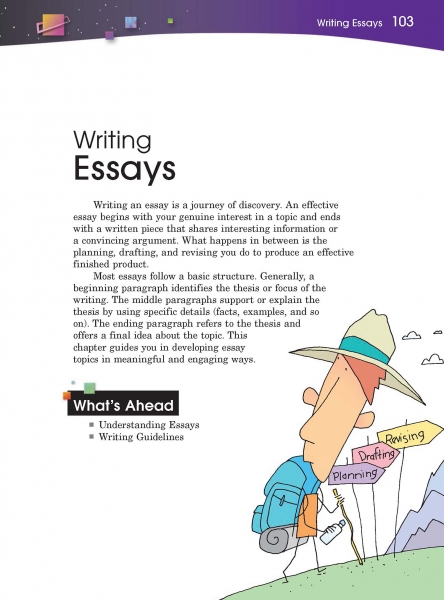Page 103 from

Start-Up Activity
On the board, write this quotation from Scott Russell Sanders: “Essays are experiments in making sense of things.” Lead a discussion about this quotation, helping students realize that essays clarify and shape a writer’s thinking about a topic.
Ask volunteers to share topics that they would like to know more about. (If needed, have students refer to their textbooks and/or the Internet for ideas.) Display their topics. Then read and discuss the chapter introduction. Determine which of the topics they identified seems worthy of exploring in an essay. Also ask students to share their experiences with essay writing.
Think About It
“A nonfiction writer is a storyteller who has taken an oath to tell the truth.”
—Russell Freedman

Start-Up Activity
On the board, write this quotation from Scott Russell Sanders: “Essays are experiments in making sense of things.” Lead a discussion about this quotation, helping students realize that essays clarify and shape a writer’s thinking about a topic.
Ask volunteers to share topics that they would like to know more about. (If needed, have students refer to their textbooks and/or the Internet for ideas.) Display their topics. Then read and discuss the chapter introduction. Determine which of the topics they identified seems worthy of exploring in an essay. Also ask students to share their experiences with essay writing.
Think About It
“A nonfiction writer is a storyteller who has taken an oath to tell the truth.”
—Russell Freedman









